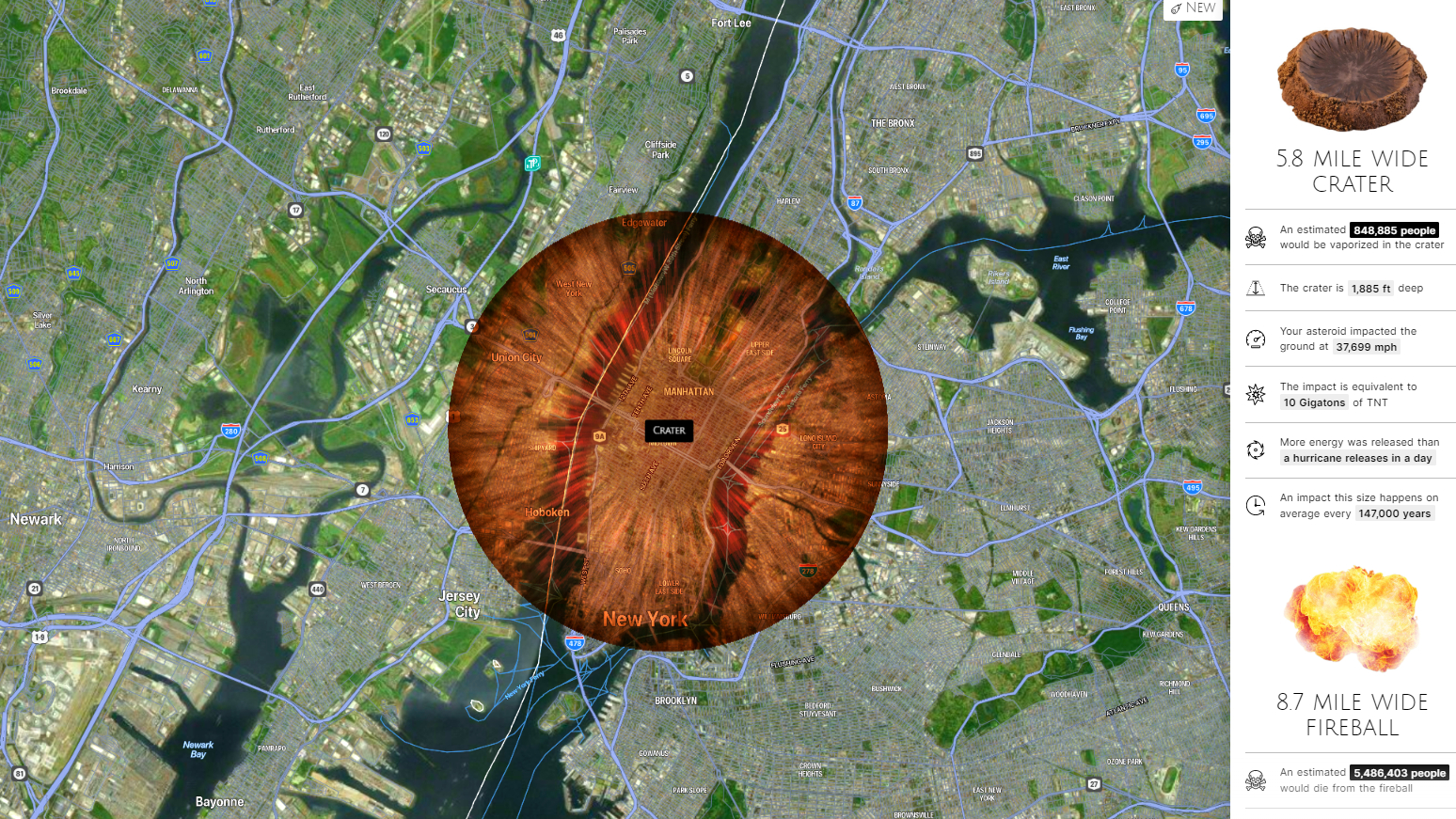
Today, astronomers are monitoring over 2,200 potentially hazardous asteroids larger than 0.6 miles (1 kilometer) across, in Earth’s orbital neighborhood. Fortunately, it’s rare that any will pass close enough to pose a real threat. But that also means anybody interested in seeing what would happen if a space rock that big happened to strike our planet must settle for the dino-killing Chixculub asteroid impact 66 millions of years ago.
Enter Asteroid Launcher, a new web app that gives asteroid impact fanatics a shot at answering some of their questions. Our friends at PC Gamer called the app "morbidly informative" for users.
Asteroid Launcher straightforward to use. You can choose from several different compositions of space rock — asteroids made from iron, stone, carbon, or gold, or a comet — and select its diameter (up to a mile), impact speed, and impact angle. Then, you select ground zero on a map, anywhere in the world, and press "Launch Asteroid."
There is more than one way an asteroid impact can kill. Asteroid Launcher captures several of them: not just the size of the crater, but that of the fireball, the shockwave, the destructive winds and the earthquake that would all spread from impact.
So, say I drop an asteroid similar to 99942 Apophis, scheduled to pass (but not hit) Earth in 2029, right atop downtown Los Angeles. (Sorry, L.A.)
According to Asteroid Launcher, that impact would leave a crater 4.7 miles (7.5 kilometers) wide, and the fireball would burn most of the city — leaving over 5.5 million people dead. The ensuing shockwave would rupture human eardrums as far as Pomona or Santa Clarita, 27 miles (43 km) away. Tornado-force winds would tear down trees as far as San Bernardino or Ventura, 67 miles (108 km) away. And a magnitude 6.9 earthquake would shake the ground as far as Bakersfield or San Diego, 119 miles (191 km) away.
Asteroid Launcher is the work of coder Neil Agarwhal, who based the app on several scientists’ academic work aimed at calculating the effects of an asteroid impact. It resembles Nukemap, a website created by science historian Alex Wellerstein in 2012 that simulates the effects of dropping a nuclear weapon anywhere in the world.
Get the Space.com Newsletter
Breaking space news, the latest updates on rocket launches, skywatching events and more!
Follow us on Twitter @Spacedotcom and on Facebook.
Join our Space Forums to keep talking space on the latest missions, night sky and more! And if you have a news tip, correction or comment, let us know at: community@space.com.

Rahul Rao is a graduate of New York University's SHERP and a freelance science writer, regularly covering physics, space, and infrastructure. His work has appeared in Gizmodo, Popular Science, Inverse, IEEE Spectrum, and Continuum. He enjoys riding trains for fun, and he has seen every surviving episode of Doctor Who. He holds a masters degree in science writing from New York University's Science, Health and Environmental Reporting Program (SHERP) and earned a bachelors degree from Vanderbilt University, where he studied English and physics.
-
CelestialMechanic Would it be possible to add a plot of a resulting tsunami? For cases when a tsunami occurs, a plot of its footprint would be highly informative.Reply









